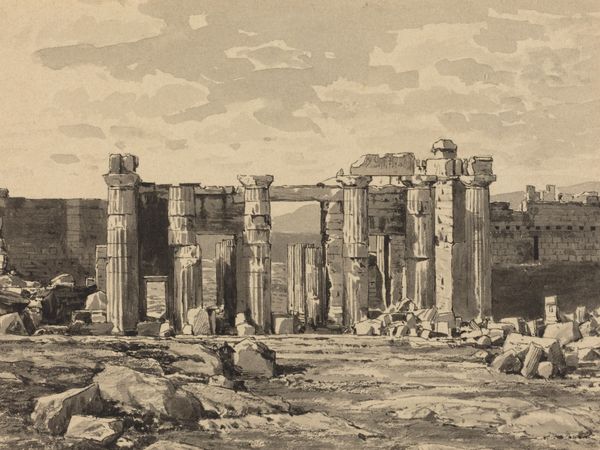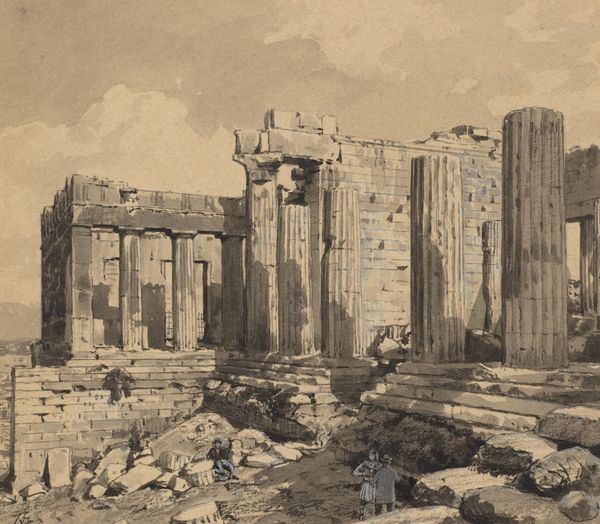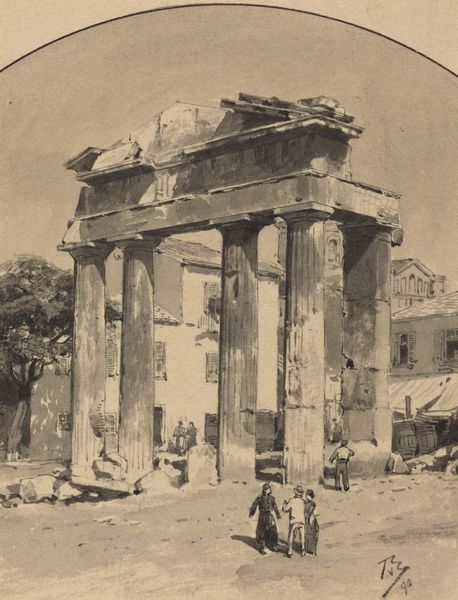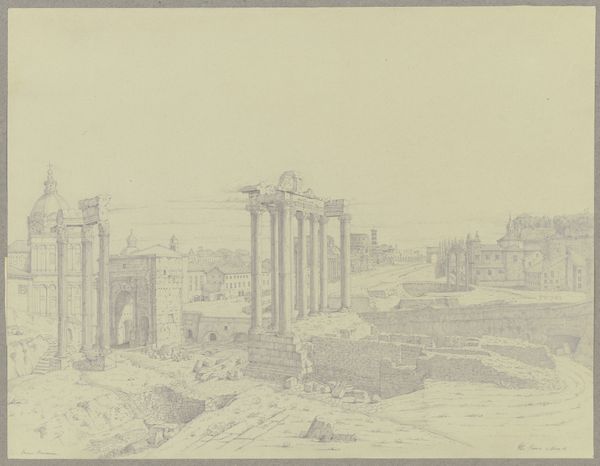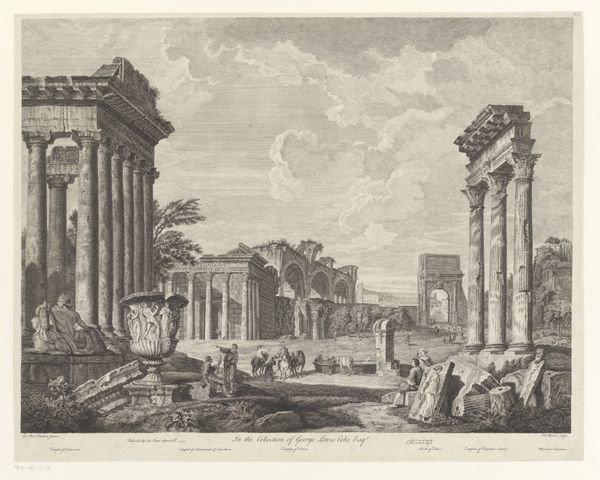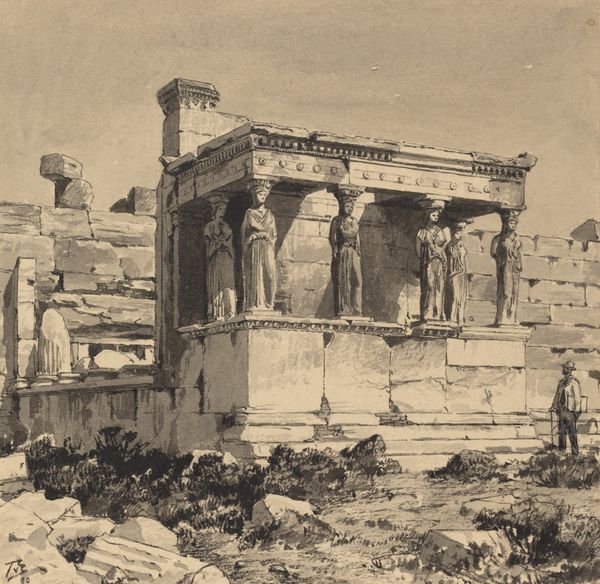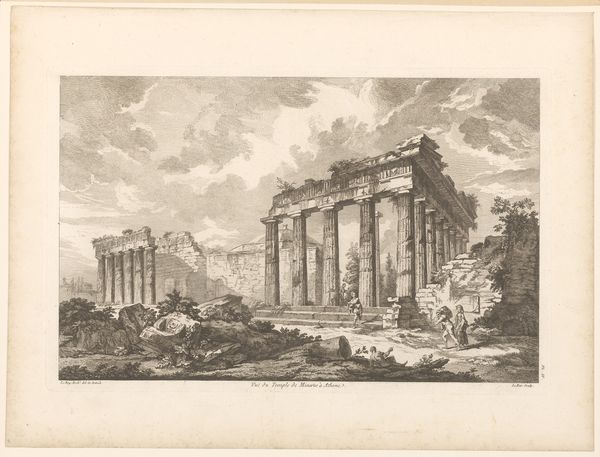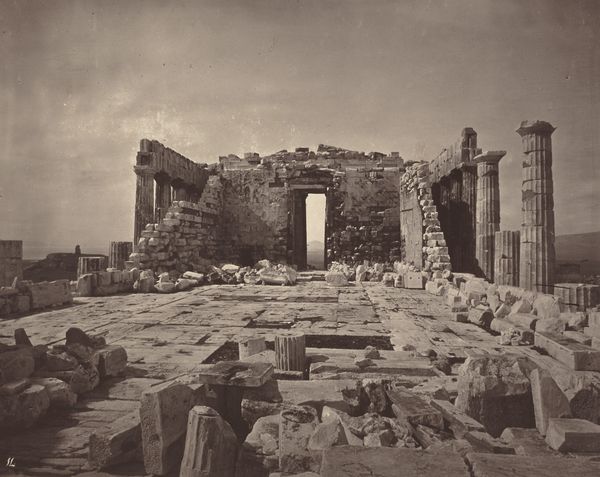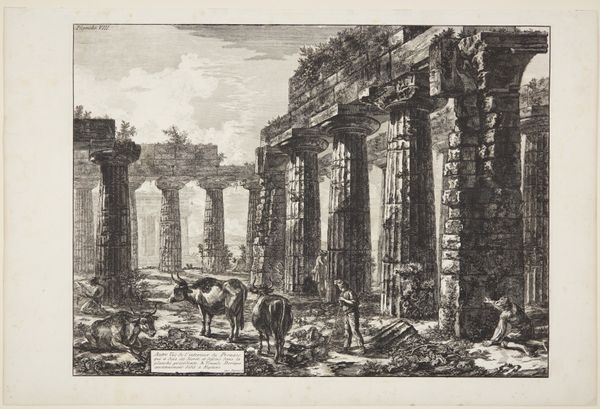
drawing
#
drawing
#
greek-and-roman-art
#
landscape
#
ancient-mediterranean
#
19th century
#
academic-art
Dimensions: Overall: 12.5 x 16 cm (4 15/16 x 6 5/16 in.) support: 48.8 x 33.7 cm (19 3/16 x 13 1/4 in.)
Copyright: National Gallery of Art: CC0 1.0
Themistocles von Eckenbrecher created this drawing of the Parthenon using pencil and watercolor, sometime in the late nineteenth century. It is one of a multitude of images of the building made and circulated across Europe at this time. We see a romantic ruin, replete with scattered blocks of marble, a ruin that has become a tourist destination. The Parthenon, of course, was not always seen as a ruin. For centuries it was in use as a Christian church and then a mosque. It was only after being heavily damaged in 1687 that it was abandoned and became a place of antiquarian interest. It’s no accident that, as the Parthenon fell into disuse, the discipline of classical archaeology was just getting underway. The image captures a moment in the history of cultural institutions and tourism. As historians, we can trace the circulation of images like these through print culture, tourist accounts, and archaeological reports. And, of course, the social and institutional conditions that shape artistic production are themselves historical events.
Comments
No comments
Be the first to comment and join the conversation on the ultimate creative platform.
